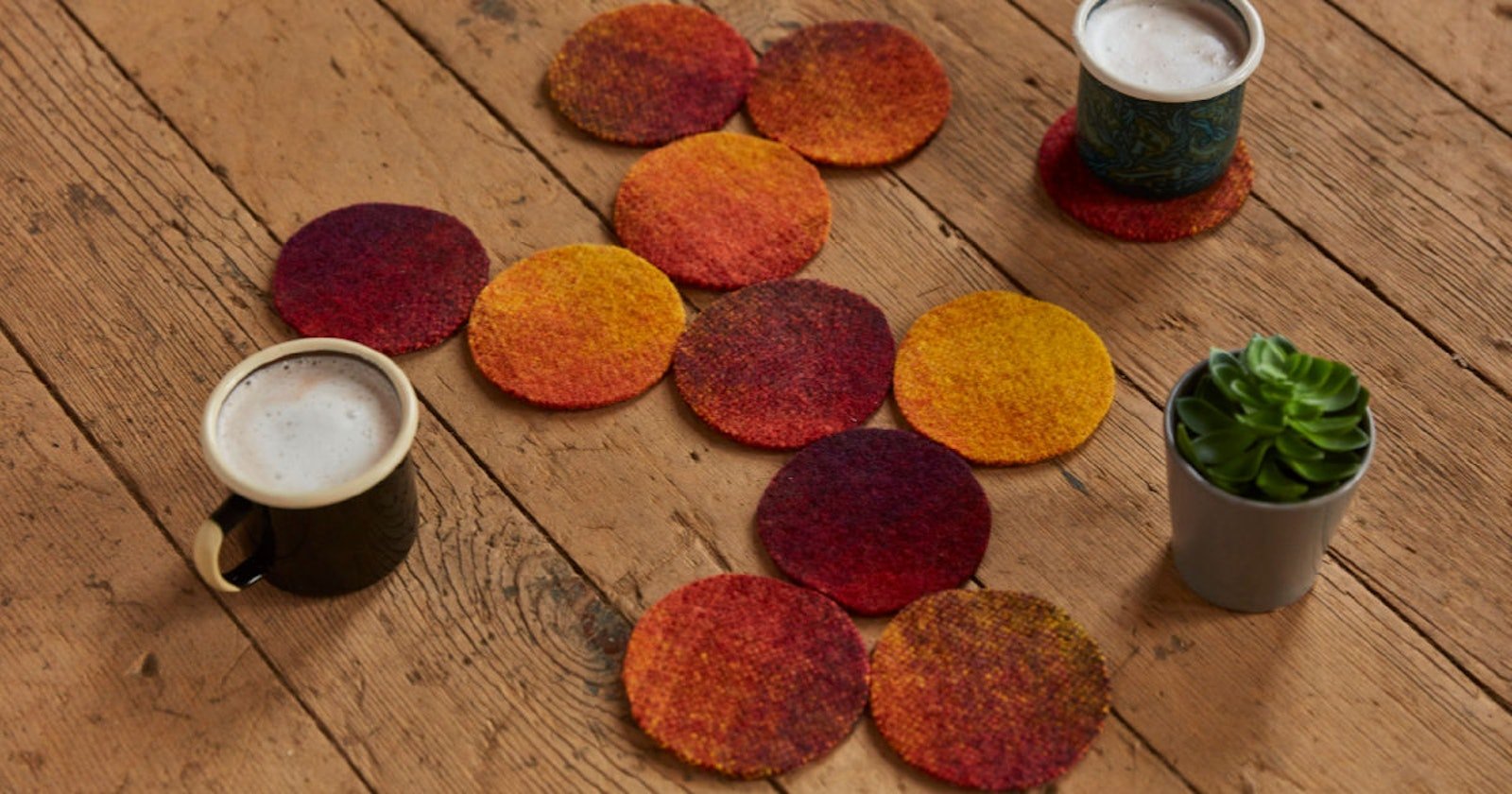If you’ve ever wet-finished a weaving made from wool, you’ve experienced the wonders of fulling. When you full a wool fabric, you’re helping to stabilize it as the fibers interlock with one another. A gentle fulling will allow the fibers to bloom and merge while still maintaining individuality; a more vigorous fulling can cause a piece of fabric to become a solid piece of what is essentially felt. I won’t go into the science of it all (for that, check out the upcoming Winter 2023 issue), but I do want to talk about the advantages of fulling.
Fulling makes a piece of cloth thicker (even if only slightly) and allows the yarns to move closer together. It can also make the fabric softer as the yarn blooms and fibers move out of their tight confines. So even a gentle fulling on a scarf, for example, can make the scarf warmer and softer against the skin.
 Constance Hall used differential shrinkage to give her Sunset View Scarf windows of texture. Photo by Matt Graves
Constance Hall used differential shrinkage to give her Sunset View Scarf windows of texture. Photo by Matt Graves
Another reason for fulling cloth is for differential shrinkage. When you combine shrinking and non-shrinking yarns in the same project, you’ll get areas of rippling or puckering. When planned, differential shrinkage can be quite pretty, as you can see in the Sunset View Scarf by Constance Hall from the Spring 2023 issue. The more you full your item, the more the shrinking yarns will shrink, giving you more dramatic effects.
 While Brittany Wells only lightly fulled her runner, she heavily fulled the fabric for her coasters. This is what allowed her to cut her trivets into leaf shapes without the fabric raveling. Photo by Matt Graves
While Brittany Wells only lightly fulled her runner, she heavily fulled the fabric for her coasters. This is what allowed her to cut her trivets into leaf shapes without the fabric raveling. Photo by Matt Graves
Heavy fulling to the point where your cloth becomes solid also has benefits. You can full yardage to sew into extra-warm, water-resistant coats, for example. You can also do like Susan E. Horton did with Fireside Coasters and Table Runner (shown at top) from the 2019 issue. After weaving a striped wool fabric, Susan heavily fulled the cloth. The fulling gave the cloth a beautiful ombré effect and allowed her to cut it out into circles without the pieces raveling. Brittany Wells did something similar in her Falling Leaves Table Runner and Trivets from Fall 2023 when she heavily fulled her trivet fabric before cutting out leaf shapes.
You can full cloth with a washing machine, by hand, or using a combination of them. The key to successful fulling is to use hot water and to check the fabric frequently throughout the process. You can always full more, but once a yarn or fabric is fulled, you can’t go back. You can’t undo fulling. Also, items will full slightly more as they dry, so stop agitating when the fabric is almost, but not quite, fulled to your desired level.
Washing Machine
Note: Most experts recommend fulling items in top-loading washing machines only. It is possible to use a front loader, but it’s less predictable. If you choose to full using a front loader, you’ll want to check your items more frequently and might need to finish fulling by hand.
Fill a sink or plastic basin with hot water and a small amount of mild detergent (a few drops to a teaspoon). Place the fabric in the basin and gently agitate. You’re not trying to full the fabric yet, just stabilizing it so it can go into the washing machine.
Trim the piece(s) as needed and then put them in the washing machine in hot water with a tiny amount (less than you’d use to wash a load of clothing) of mild detergent. During the wash cycle, check the item every 2 to 5 minutes, depending on how fast the item is fulling. Remove when the fabric has fulled almost to your desired level, as it will full slightly as it dries. Rinse in cold water and let dry flat.
Hand Fulling
Fill a sink or plastic basin with hot water and a small amount of mild detergent (a few drops to a teaspoon). Place the fabric in the basin and agitate the cloth by kneading it and rubbing it together. If you have a felting board, you can use that as well. (Alternatively, you can put the fabric and water in a lidded receptacle and shake to agitate.) Try to knead and rub as evenly as possible, not focusing too much on one section or another.
Check the item(s) every few minutes to evaluate the level and evenness of fulling. Continue alternating kneading and checking until the fabric has fulled almost to your desired level, as it will full slightly as it dries. Rinse in cold water and let dry flat.
I hope this inspires you to plan a project around fulling or to try one of the projects I’ve mentioned above. Remember, subscribers can access all back issues of Easy Weaving with Little Looms in our Little Looms Library, while All Access Subscribers can get all the individual project PDFs in the same place.
Happy Weaving!
Christina

